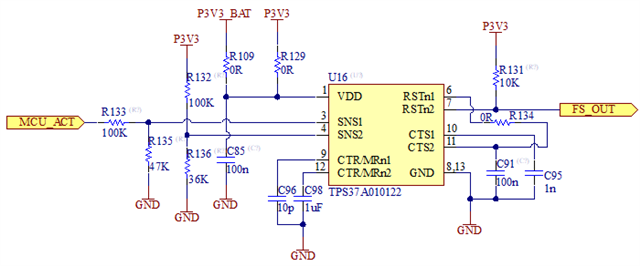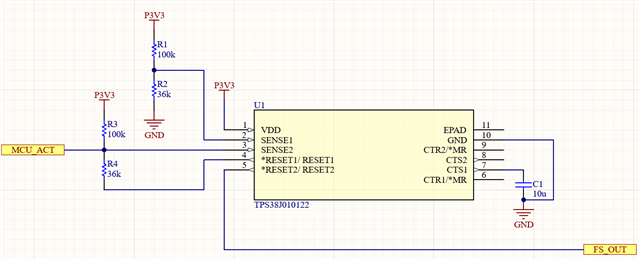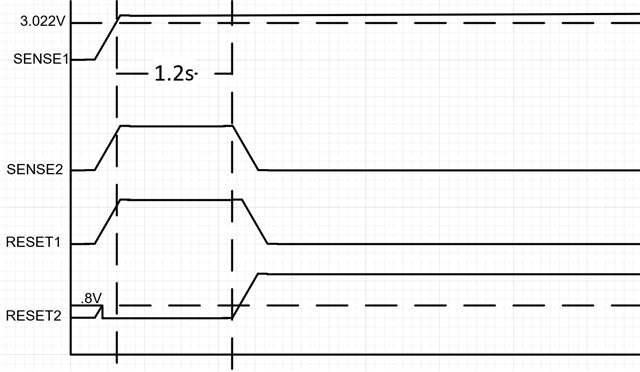Other Parts Discussed in Thread: TPS38
Tool/software:
I have an application where an MCU will control an output pin that drives a relay (via a high side load switch). But if the MCU does not boot up I need the output pin to turn on after a set amount of time (1-2s), ideally adjustable.
I need an IC or circuit that will do the following:
Turn the output on immediately when there is a signal on the input.
If no input is present then turn on the output after a defined amount of time.
I was thinking I could utilise a reset or watchdog IC or maybe even a push button IC like the TPS3808E-Q1 or similar and take advantage of the active low reset pin, but I having a hard time working out the logic of this.
Any ideas? Thanks in advanced!




